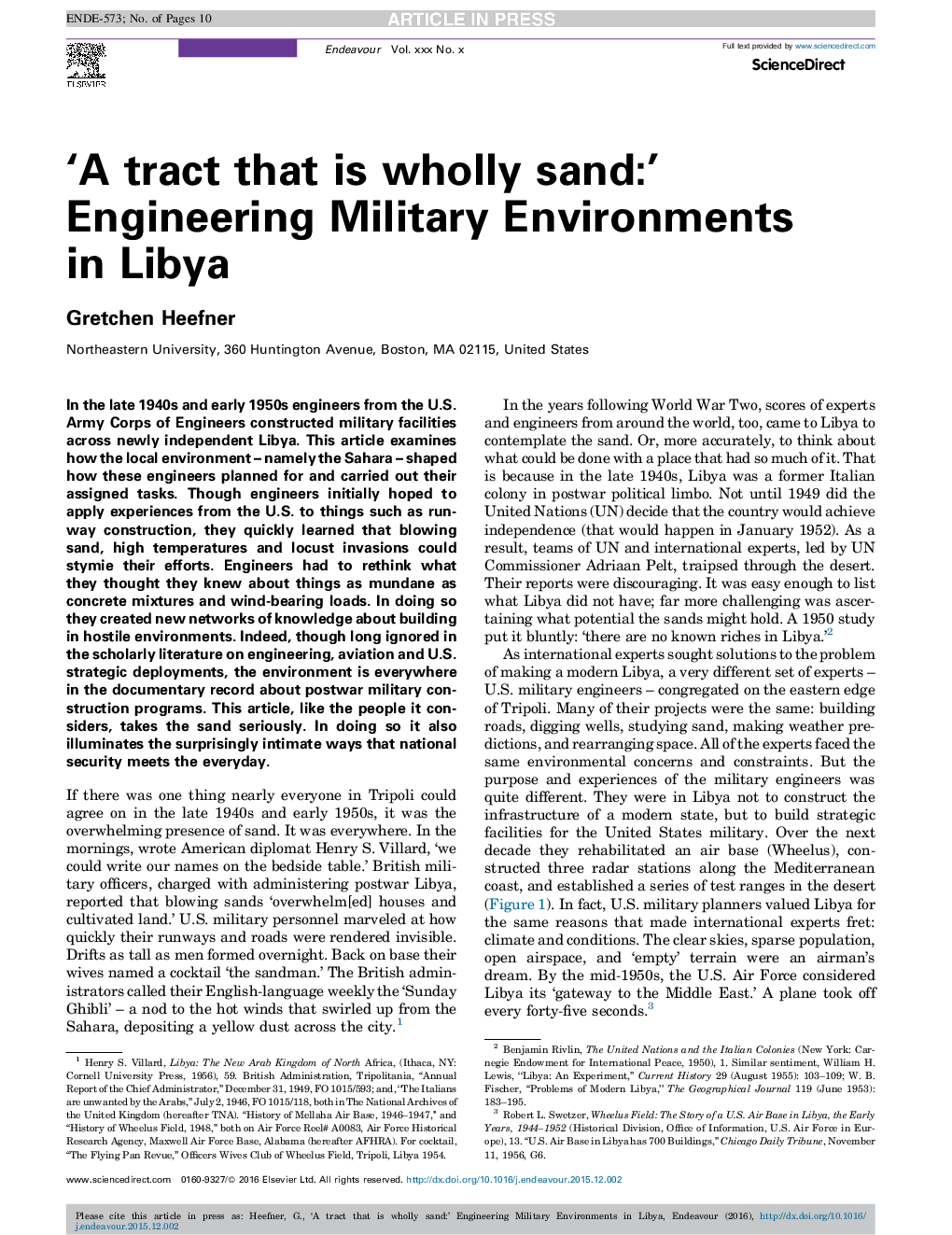| Article ID | Journal | Published Year | Pages | File Type |
|---|---|---|---|---|
| 10527886 | Endeavour | 2016 | 10 Pages |
Abstract
In the late 1940s and early 1950s engineers from the U.S. Army Corps of Engineers constructed military facilities across newly independent Libya. This article examines how the local environment - namely the Sahara - shaped how these engineers planned for and carried out their assigned tasks. Though engineers initially hoped to apply experiences from the U.S. to things such as runway construction, they quickly learned that blowing sand, high temperatures and locust invasions could stymie their efforts. Engineers had to rethink what they thought they knew about things as mundane as concrete mixtures and wind-bearing loads. In doing so they created new networks of knowledge about building in hostile environments. Indeed, though long ignored in the scholarly literature on engineering, aviation and U.S. strategic deployments, the environment is everywhere in the documentary record about postwar military construction programs. This article, like the people it considers, takes the sand seriously. In doing so it also illuminates the surprisingly intimate ways that national security meets the everyday.
Related Topics
Social Sciences and Humanities
Arts and Humanities
History
Authors
Gretchen Heefner,
